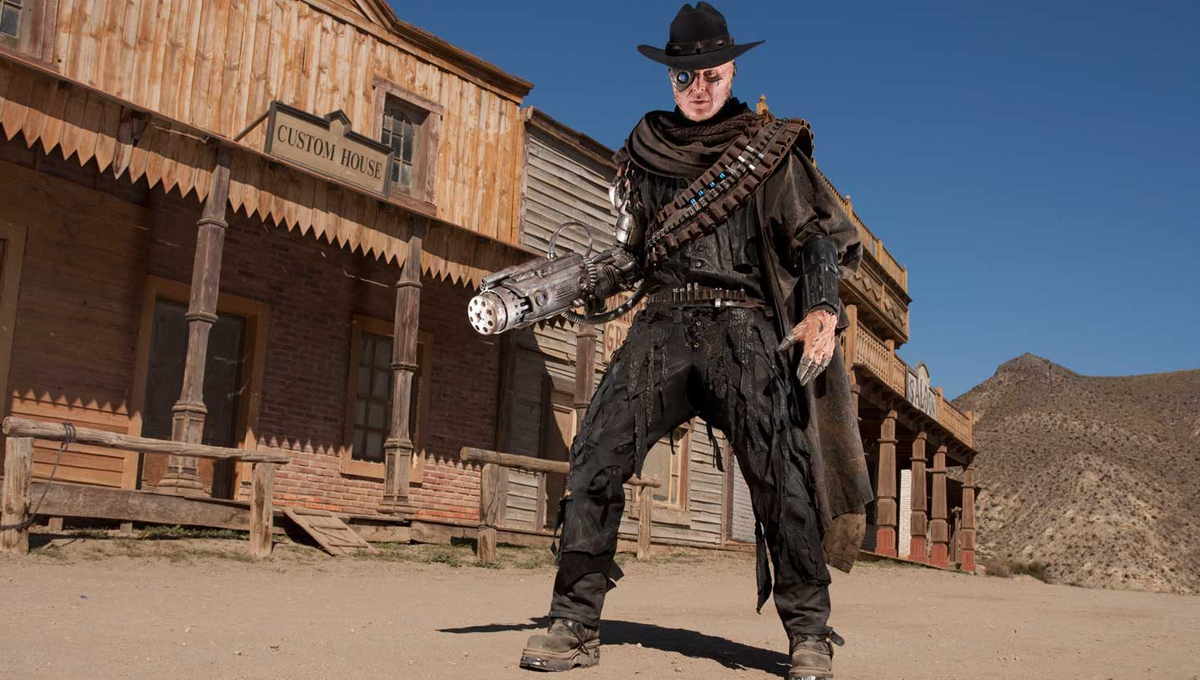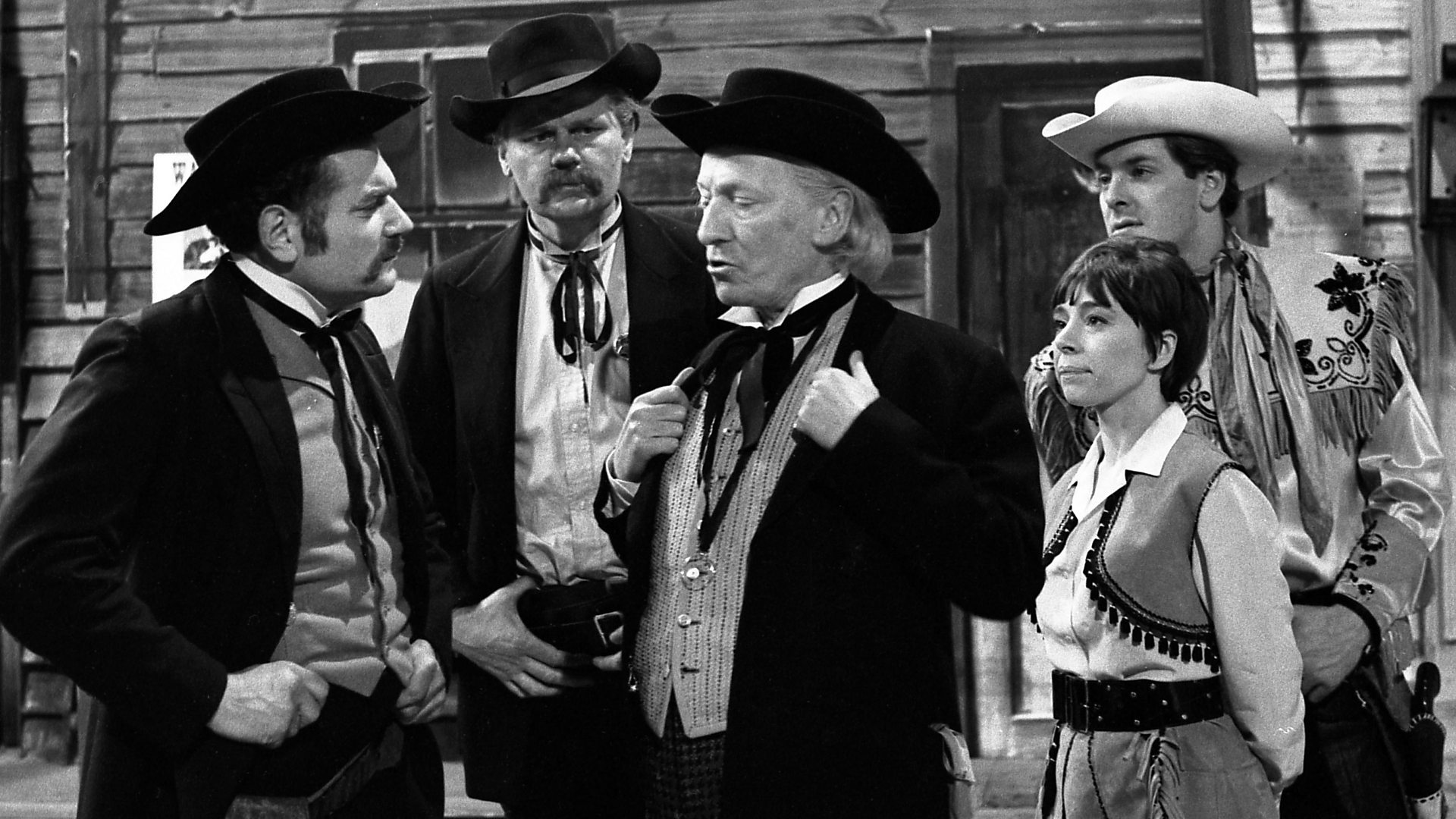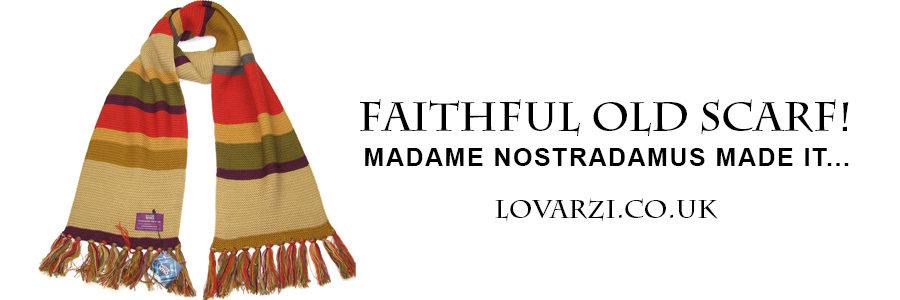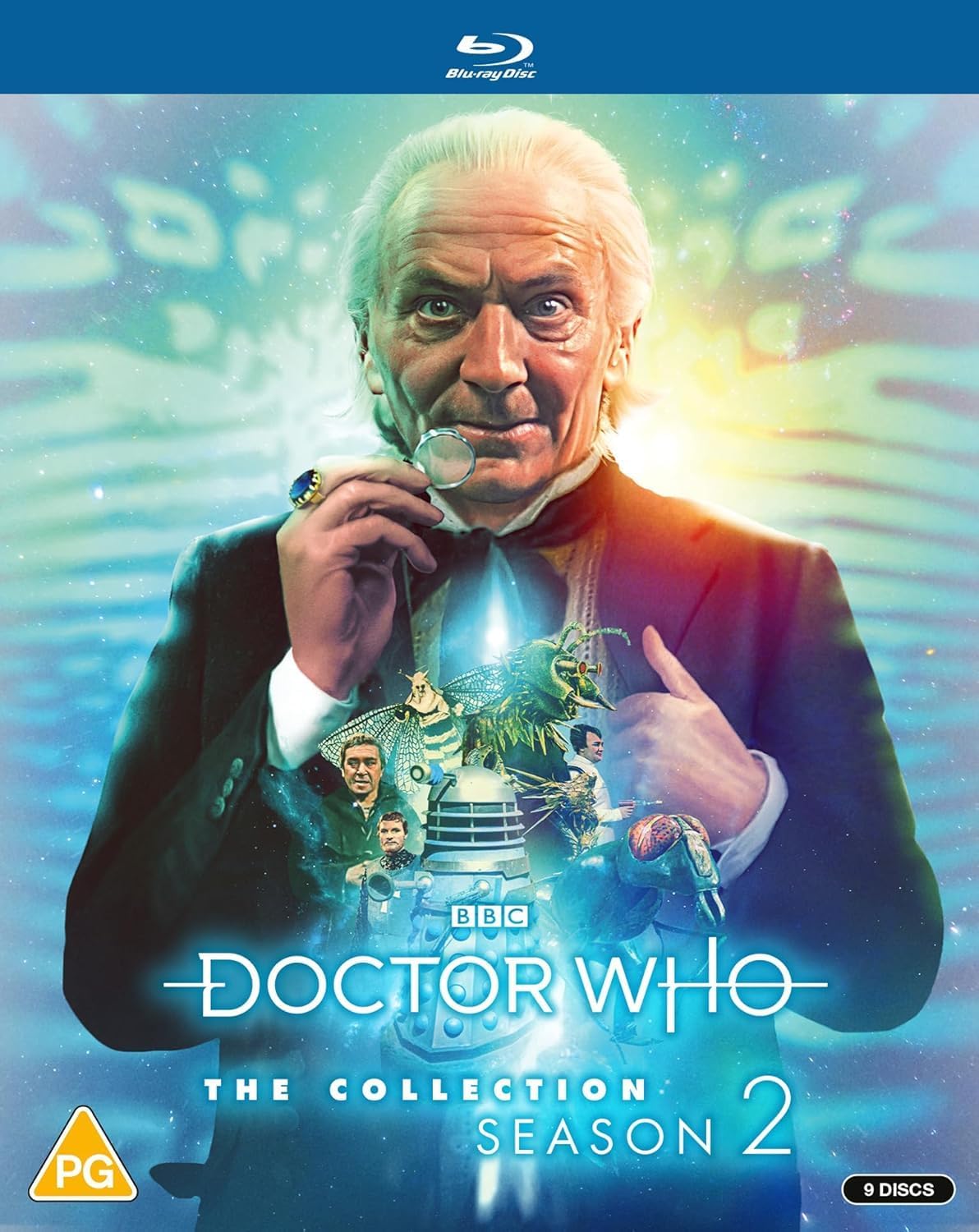Believe it or not, there have only been two Western Doctor Who stories in the series’ history. Which one is better, and are they worth your time?

The Time Lord’s first trip to the Wild West has become almost legendary among Doctor Who stories for being… well, terrible. But is its bad reputation justified? Certainly, Doctor Who stories will always have their haters; even ‘The Daleks’ Master Plan‘ has its detractors. But the 1966 adventure ‘The Gunfighters’ is certainly very different, and won’t appeal to everyone.
One of the serial’s most divisive elements is its use of a song to bookend the start and end of most scenes – the infamous ‘Ballad of the Last Chance Saloon’ performed by Lynda Baron. This song narrates the action as it unfolds to the same, basic melody. And as a song, it’s fine; it won’t win many Grammys, but it’s well sung. The biggest debate is whether it has any place in Doctor Who.

Other Doctor Who stories have featured musical numbers; Murray Gold famously wrote his own songs for the early Christmas specials like ‘Song for Ten’ and ‘Love Don’t Roam.’ Then there is ‘The Devil in Me’ from ‘Daleks in Manhattan’ and the (again infamous) ‘Twist at the End’ from ‘The Devil’s Chord‘ which didn’t just break the fourth wall, but smashed it with a wrecking ball.
One should also remember that contemporary viewers could take a weekly break from ‘The Ballad of the Last Chance Saloon,’ whereas the viewer of today will most likely watch the story in one sitting, which could turn the experience into something of an endurance fest.
But there is also the overall feel of ‘The Gunfighters’ to consider. Like many Doctor Who stories, this one has a strong comic thrust; this is not a gritty Clint Eastwood tale, but a more pantomimic take on the oft-used genre. If you like to hide behind the sofa when consuming your Doctor Who stories, ‘The Gunfighters’ probably won’t do it for you, unless you’re trying to escape Lynda Baron’s dulcet tones and the questionable American accents. But if you’re after some easy viewing and a classic Doctor Who ‘romp,’ then this one is well worth your time.
Just be prepared to suspend your disbelief when Dodo miraculously displays her piano-playing prowess, performing – you guessed it – ‘The Ballad of the Last Chance Saloon,’ with Steven singing. Spotify here we come.
Sadly, it would be some 46 years before the Time Lord would visit the Wild West again (on screen, at least.) 2012’s ‘A Town Called Mercy’ had Matt Smith at the helm, and saw the Doctor and his companions Amy and Rory landing in a typical Western town in the late 1800s.
And the first thing you will notice about this adventure is how good it looks. For Series Seven, the BBC focused on producing more ‘standalone’ Doctor Who stories, less concerned with a grander plot arc. To this end, they promoted each individual episode with movie-like posters, and indeed every episode in this series had a movie-like feel, particularly ‘A Town Called Mercy.’ The team travelled abroad and filmed the story in a purpose-built film set in Spain. Apparently, this set had been used for over 100 Western films, including the Clint Eastwood classic A Fistful of Dollars.

Watching ‘A Town Called Mercy,’ therefore, is a bit like watching a short Doctor Who movie; it looks great. But what about the actual story?
Well, the adventure was penned by Toby Whithouse, who was no stranger to Doctor Who stories having previously written ‘School Reunion’ in 2006. But unlike the comedic ‘Gunfighters,’ this was a more serious affair with a strong science fiction element. ‘A Town Called Mercy’ concerns a cyborg known only as The Gunslinger who is holding the eponymous town hostage; he won’t let anyone leave unless they hand over a doctor known as Kahler-Jex – an alien who crash-landed in Mercy years before. The Gunslinger wants the man dead owing to his unethical cyborg experimentation – The Gunslinger being one of his victims.
As you can probably tell, this is a one of the more ‘philosophical’ Doctor Who stories, and one that is certainly more thought-provoking than ‘The Gunfighters.’ In ‘A Town Called Mercy,’ the inhabitants face a dilemma: do they let the stand-off continue, or do they hand over their friend Kahler-Jex, and allow him to be executed? There are no easy answers, and this moral maze is very much at the heart of ‘A Town Called Mercy,’ with the Doctor caught in the middle.
In the end (spoiler alert) the Doctor tries to lure The Gunslinger into a trap and confuse him by having all the residents wear Jex-like face masks, allowing Jex time to reach his spaceship. But Jex takes matters into his own hands and activates the self-destruct as penance for his crimes. With justice seemingly served, The Gunslinger opts to remain on Earth as the town’s new guardian.

So which of these two Doctor Who stories is ‘better’? In truth, although they’re both Westerns, they are like chalk and cheese; they are completely different in terms of tone, genre and production values. One is a historical, the other is science fiction. One is a comedy, the other is a drama. One has ‘The Ballad of the Last Chance Saloon’ and the other… well, doesn’t have ‘The Ballad of the Last Chance Saloon.’
Lovarzi recommends you watch both; spread these Doctor Who stories out over a few nights so that you don’t get Lynda Baron fatigue, and you’ll have a thigh-slapping good time.
In the meantime, tell us: which of these Doctor Who stories do you prefer? And what do you really think of ‘The Ballad of the Last Chance Saloon’? Let us know in the comments below.










Leave a Reply